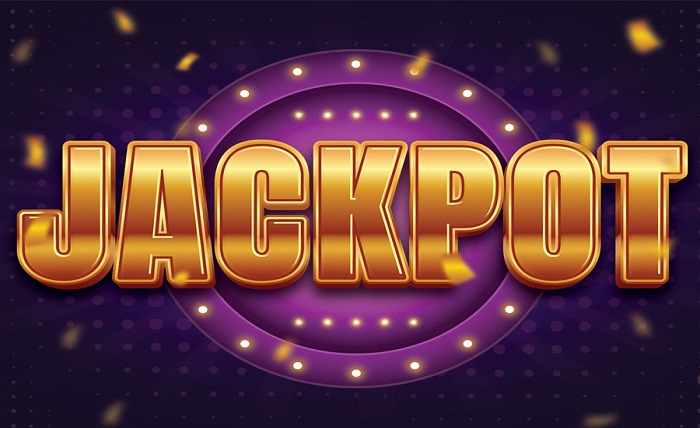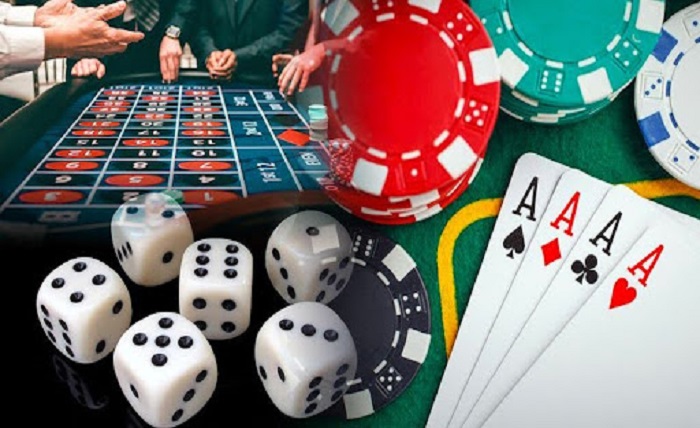The Art of Absolute Power: Unveiling the One Punch Man Manga Artist, Yusuke Murata
In the vast and competitive world of manga, few works have managed to achieve the explosive, global impact of One Punch Man. The story of Saitama, a hero so powerful he can defeat any foe with a single punch, is a masterpiece of subversive storytelling and breathtaking action. While the original webcomic by ONE laid the ingenious foundation, its transition into a global phenomenon is almost single-handedly due to the unparalleled artistic genius of the One Punch Man manga artist, Yusuke Murata. His name has become synonymous with some of the most detailed, dynamic, and visually stunning pages ever put to print in the industry. The role of the One Punch Man manga artist is not merely to illustrate a pre-existing story but to reinvent it, elevate it, and inject it with a cinematic life that transcends the source material. Understanding the work of this legendary One Punch Man manga artist is key to appreciating why this series stands as a titan in the manga world.
Table of Contents
ToggleFrom Humble Beginnings: The Early Career of the Future One Punch Man Manga Artist
Long before the name Saitama became iconic, Yusuke Murata was already a respected and accomplished figure in the manga industry. His journey to becoming the One Punch Man manga artist began in his youth, showcasing a prodigious talent that was recognized early on. At the age of 20, he won the coveted 122nd Hop Step Award for new manga artists, a testament to his innate skill. However, his big break came with the serialization of Eyeshield 21 in Weekly Shōnen Jump, a manga about American football written by renowned author Riichiro Inagaki. It was here that Murata first truly flexed his artistic muscles. The series was a hit, praised for its incredible sense of motion, detailed character designs, and ability to make a sport unfamiliar to many Japanese readers feel intensely exciting and dynamic. The work on Eyeshield 21 was crucial training ground for the future One Punch Man manga artist, honing his ability to depict high-speed action and complex physical movement with crystal clarity. This experience in mastering kinetic energy and storytelling through art would become the bedrock upon which he would build the visual spectacle of One Punch Man, proving that the One Punch Man manga artist was a seasoned professional long before the caped baldy arrived on the scene.
A Fateful Collaboration: How ONE and Murata Joined Forces
The story of how Yusuke Murata became the One Punch Man manga artist is a fascinating tale of artistic admiration and a shared vision. One Punch Man began as a webcomic created by the enigmatic author known only as ONE. Drawn in a purposefully crude, simple style, the webcomic’s strength was never its visuals but its hilarious deconstruction of superhero tropes, its witty writing, and its unexpectedly compelling characters. Despite its rough art, it developed a significant cult following online. Yusuke Murata was among those captivated by ONE’s storytelling genius. Enamored with the concept and characters, Murata, already an established One Punch Man manga artist in the making, reached out to ONE with a proposal: he would redraw the webcomic as a digital manga, released for free online. This was not a typical publisher-mandated assignment; it was a passion project born from one artist’s respect for another’s work. ONE agreed, and their historic collaboration began on the website Young Jump Web Comics (now known as Tonari no Young Jump). This partnership is the heart of the series’ success; ONE provides the storyboards and narrative direction, while the One Punch Man manga artist, Murata, is entrusted with complete artistic freedom to interpret, sequence, and amplify the action. This unique, synergistic relationship between writer and artist is what allows the manga to flourish as it does.
Beyond Redrawing: The Artistic Process of the One Punch Man Manga Artist
To say that the One Punch Man manga artist simply “redraws” ONE’s webcomic is a gross misrepresentation of an immensely complex and creative process. Murata’s role is that of a co-creator and visual director. The process typically begins with ONE providing a storyboard, known as a name. This name contains the dialogue, basic panel layouts, and key actions. This is where the magic begins for the One Punch Man manga artist. Murata takes this blueprint and completely reimagines it. He often expands upon sequences, adds entirely new scenes of action to enhance the pacing and spectacle, and meticulously designs characters and environments with an insane level of detail that was absent in the original. The One Punch Man manga artist is renowned for his use of digital tools, which allow for an incredible range of effects and precision. He frequently streams his drawing process online, offering fans a mesmerizing glimpse into his workflow. Watching the One Punch Man manga artist at work is to witness a master draftsman who can sketch, ink, and shade with both staggering speed and impeccable accuracy, building sprawling cityscapes and devastatingly powerful punches layer by layer. His process is a blend of traditional manga artistry and cutting-edge digital technique, setting a new standard for what is possible in the medium.
The Hallmarks of a Master: Defining the Art Style of the One Punch Man Manga Artist
The artwork produced by the One Punch Man manga artist is instantly recognizable and has been widely praised for several key characteristics. First and foremost is the unparalleled level of detail. From the intricate textures of Monster Association cadres to the shattered rubble of a city block after a battle, every element on the page is rendered with meticulous care. This detail creates a world that feels tangible and weighty, making the absurdity of the characters and their powers even more compelling. Secondly, the One Punch Man manga artist possesses a masterful understanding of motion and impact. His fight scenes are not just a series of images; they are a fluid choreography of movement. He uses speed lines, motion blurs, and perspective distortion not as clichés but as tools to guide the reader’s eye and create a visceral sense of velocity and power. When Saitama punches, the One Punch Man manga artist makes the reader feel the shockwave. Furthermore, his cinematic storytelling is exceptional. Murata often employs dramatic angles, double-page spreads that function like wide-shot panels in a movie, and careful pacing that builds tension to a crescendo. The artistic style of the One Punch Man manga artist is a perfect paradox: it uses hyper-realistic and incredibly serious artwork to sell a comedy about a man who ends fights before they begin.
More Than Just Saitama: Character Design by the One Punch Man Manga Artist
While Saitama’s simple, almost goofy design is a brilliant stroke from ONE, the One Punch Man manga artist has the Herculean task of designing the vast menagerie of heroes and monsters that populate the world. Murata’s character design work is a cornerstone of the manga’s appeal. He takes ONE’s often simplistic concepts and transforms them into iconic visual identities. Characters like Genos, the cyborg disciple, are defined by their incredibly complex mechanical anatomy, which the One Punch Man manga artist renders with the precision of an engineering schematic. The myriad of S-Class heroes, from the elegant Atomic Samurai to the hulking Tanktop Master, each have distinct silhouettes and costumes that speak volumes about their personalities. However, it is perhaps with the monsters that the One Punch Man manga artist truly unleashes his creativity. The designs for beings like Boros, Carnage Kabuto, and the Deep Sea King are simultaneously terrifying, bizarre, and brilliantly imaginative. The One Punch Man manga artist ensures that every character, no matter how minor, has a unique and memorable visual presence, enriching the world far beyond the confines of the main plot.
Pushing the Boundaries: The Digital Innovation of the One Punch Man Manga Artist
Yusuke Murata is not just a traditional artist; he is a pioneer who has embraced digital technology to push the boundaries of the manga form. The One Punch Man manga artist is known for his innovative use of 3D modeling software and digital painting techniques to achieve a level of detail and perspective that would be incredibly time-consuming, if not impossible, by hand alone. He often creates basic 3D models of environments like cityscapes or complex machinery (like Genos’s internal parts) to ensure perfect perspective and lighting in every panel. This hybrid approach allows the One Punch Man manga artist to maintain a consistent and mind-bogglingly detailed background world against which the action takes place. His willingness to experiment and integrate new tools into his workflow has made him a modern icon in the industry. The work of the One Punch Man manga artist serves as a case study in how technology can be harnessed to enhance artistic vision, rather than dilute it, resulting in a product that feels both classic and futuristic.
The Legacy and Influence of the One Punch Man Manga Artist
The impact of Yusuke Murata’s work as the One Punch Man manga artist extends far beyond the pages of the manga itself. He has, in many ways, raised the bar for artistic quality in the entire industry. His monthly chapters are events anticipated by fans worldwide, not just for the story, but to see what new visual marvels the One Punch Man manga artist has concocted. Aspiring manga artists study his pages, breaking down his techniques for conveying motion, impact, and texture. His live-drawing streams have educated and inspired a generation of digital artists. The success of One Punch Man has proven that a digital-first release model can work spectacularly and that a passionate artist-driven project can compete with and even surpass the output of major publishing houses. The legacy of the One Punch Man manga artist is one of relentless pursuit of perfection, a demonstration of how sublime artwork can elevate a great story into an unforgettable experience. He has cemented his place as one of the most skilled and influential manga artists of his generation.
Conclusion
The phenomenon of One Punch Man is a powerful reminder that manga is a collaborative art form where writing and illustration are inextricably linked. While ONE’s brilliantly subversive story is the soul of the series, it is Yusuke Murata, the unparalleled One Punch Man manga artist, who is its beating heart and breathtaking visual cortex. His incredible dedication, innovative spirit, and god-level drafting skills have transformed a popular webcomic into a global benchmark for artistic excellence in comics. Through his work, Murata has not only given us the definitive version of Saitama’s world but has also inspired countless artists and captivated millions of readers, forever changing our perception of what manga can achieve.
FAQs
1. Is Yusuke Murata the original creator of One Punch Man?
No, Yusuke Murata is the One Punch Man manga artist for the redrawn, digitally published version. The original creator is ONE, who first wrote and drew the webcomic with a much simpler art style.
2. Why does the manga release so slowly compared to other series?
The incredible level of detail in every panel requires an immense amount of time and effort from the One Punch Man manga artist. Murata’s process is notoriously meticulous, and the quality of each chapter is prioritized over a rapid release schedule.
3. Does Murata have any other famous works besides One Punch Man?
Yes, before becoming the One Punch Man manga artist, Yusuke Murata was famous for illustrating the hit sports manga Eyeshield 21, written by Riichiro Inagaki.
4. Where can I see Yusuke Murata draw?
The One Punch Man manga artist frequently livestreams his drawing process on platforms like YouTube and Niconico, offering a fascinating look into his creative and technical process.
5. Does Murata contribute to the story of One Punch Man?
While the core narrative comes from ONE, the One Punch Man manga artist has significant input. Murata often expands action sequences, adds new scenes for pacing, and designs characters and monsters, making him a crucial creative force in the manga’s development.







